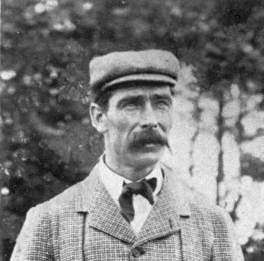Past Captain Alistair Noakes delves into the archives.
In September The Royal Liverpool Golf Club Village Play will mark its 125th birthday or, more officially, its quasquicentennial. This will be a significant moment for the Club known locally just as 'The Village Play' - only 26 years younger than RLGC itself.
The Club’s name says much about its unusual and unique history, which began with initial discontent inspired by the land on which the Hoylake course was built.

The Sports Handicap, 1850
Prior to the arrival of golf, the Hoylake ‘Warren’, was used by the Liverpool Hunt Club as a horse racing venue, and its regular meetings always proved popular as a focus for colourful and exciting entertainment. However, golf and horse racing could never mix and vandalism of greens and general disruption to the playing of golf by the locals soon became a constant issue. It took a local tragedy to finally bring golfers and Hoylake townsfolk together.
The devastating storm of December 1894 resulted in the tragic death of five local fishermen and caddies. Royal Liverpool’s members wished to put something back into the town, and an agreement was reached whereby local fishermen and artisans would be allowed to play at certain times in return for work on the course, including weeding, bunker work and general repairs. Minutes compiled at that meeting show that The RLVP came into existence on 12th September 1895.

The original Minutes
Records also suggest that The Royal Liverpool Village Play Golf Club is the third oldest artisan club in the world after Northam in Devon and Cantelupe in Hampshire. Although Village Play members have dropped from an initial 200 to the current 50, they still carry out essential ‘divoting’ work, general course maintenance, and ball spotting duties throughout the year and at key championship events.
The Village Play members have their own clubhouse tucked away to the side of the short play practice area alongside the last green, and although not as grand as the main Club’s, its facilities are more than adequate to serve the membership.
Over time many Royal Liverpool members have marked their appreciation for the work carried out by the Village Play by offering up trophies in their names. The Ryder Richardson, (the handicap knock-out competition), the David Brown, the Pegram Cup and the Perrin Shield are just a few of these trophies which reflect the strong bond the two Clubs share. Others, such as The Glover Cup (100 years old just last year), and the Dan Tobey were donated by past captains and, along with the Ladies and Colts trophies, are competed for each year in the true spirit of firm friendship and intense rivalry.
In the early days even Hoylake’s finest, John Ball and Harold Hilton, turned out for RLGC to play in The Glover Cup, for this was also a time when almost every Village Play member was a scratch or single handicap player. And then there’s the Glenda Jackson Trophy - named after the wonderful actor. Her father was a Village Play member.

John Ball in 1897
Over the years many distinguished Village Play golfers have made their mark on the game. Joe Lloyd, nicknamed the ‘General’, won the caddies medal in 1872 and, after becoming the professional at Pau Golf Club in Southern France and later at Manchester, USA, he would go on to win the prestigious US Open title in 1897.

Joe Lloyd, 'The General'
It was a remarkable win as Joe, considered one of the longest hitters of his era, was behind until the very last moment. Launching an enormous drive down the par 5 eighteenth he followed it up with a brassie to 8 feet and then knocked home the putt for a 3. To date he is the only player to have won the US Open by finishing with an eagle on the last. He had come a long way from his early Village Play days.
Closer to home, George Pulford, born in 1873, achieved a fourth place finish in the 1895 Open, and bettered this again in the 1897 and 1907 championships by coming an impressive third on both occasions.

John Dalton, Jim McVey and Peter Williams
More recently John Dalton, a much-loved Village Play member for over 50 years, played in The Open twice in the early 60’s. John is one of a number of members who have given long and distinguished service to the Club. Also of particular note are Richie and Bobby Lucas, who have given a total 86 years combined service. Others like Reg Barton, a long-standing member for many years, recalled seeing Bobby Jones’ famous win in the 1930 Open, and Alf Padgham’s six years later. More recently the Club has been indebted to Jimmy McVey, who at the age of 86 has just retired as starter for the main Club. Jimmy can testify to an impressive 63 years of valued membership of the Village Play, 25 years of which were in the capacity of Chairman.
Later this year as the Village Play members celebrate and reflect on their long and valued partnership with the main Club, they will also look forward to upholding the traditions of artisan golf for many more years to come.
Advertisement





